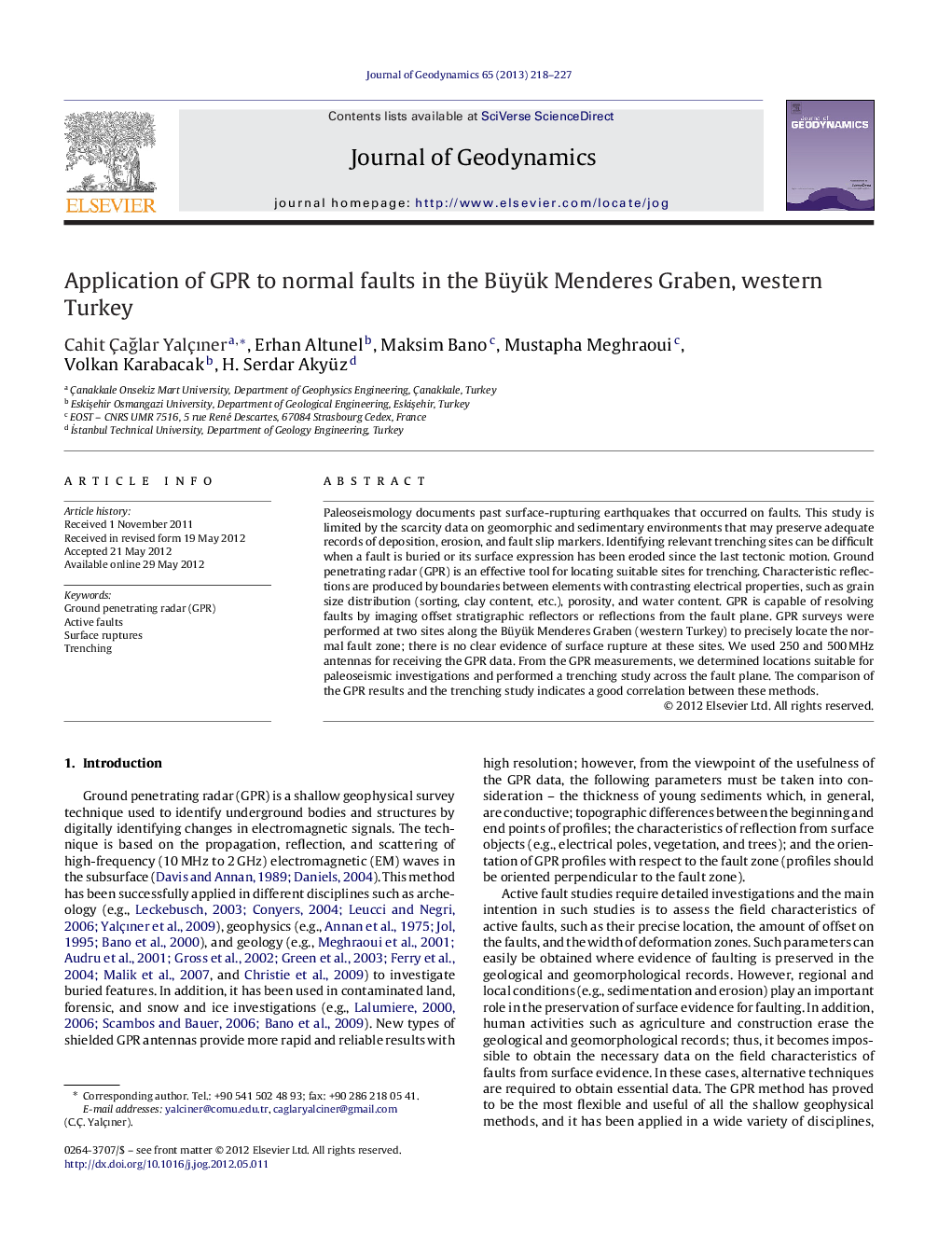| Article ID | Journal | Published Year | Pages | File Type |
|---|---|---|---|---|
| 4688255 | Journal of Geodynamics | 2013 | 10 Pages |
Paleoseismology documents past surface-rupturing earthquakes that occurred on faults. This study is limited by the scarcity data on geomorphic and sedimentary environments that may preserve adequate records of deposition, erosion, and fault slip markers. Identifying relevant trenching sites can be difficult when a fault is buried or its surface expression has been eroded since the last tectonic motion. Ground penetrating radar (GPR) is an effective tool for locating suitable sites for trenching. Characteristic reflections are produced by boundaries between elements with contrasting electrical properties, such as grain size distribution (sorting, clay content, etc.), porosity, and water content. GPR is capable of resolving faults by imaging offset stratigraphic reflectors or reflections from the fault plane. GPR surveys were performed at two sites along the Büyük Menderes Graben (western Turkey) to precisely locate the normal fault zone; there is no clear evidence of surface rupture at these sites. We used 250 and 500 MHz antennas for receiving the GPR data. From the GPR measurements, we determined locations suitable for paleoseismic investigations and performed a trenching study across the fault plane. The comparison of the GPR results and the trenching study indicates a good correlation between these methods.
